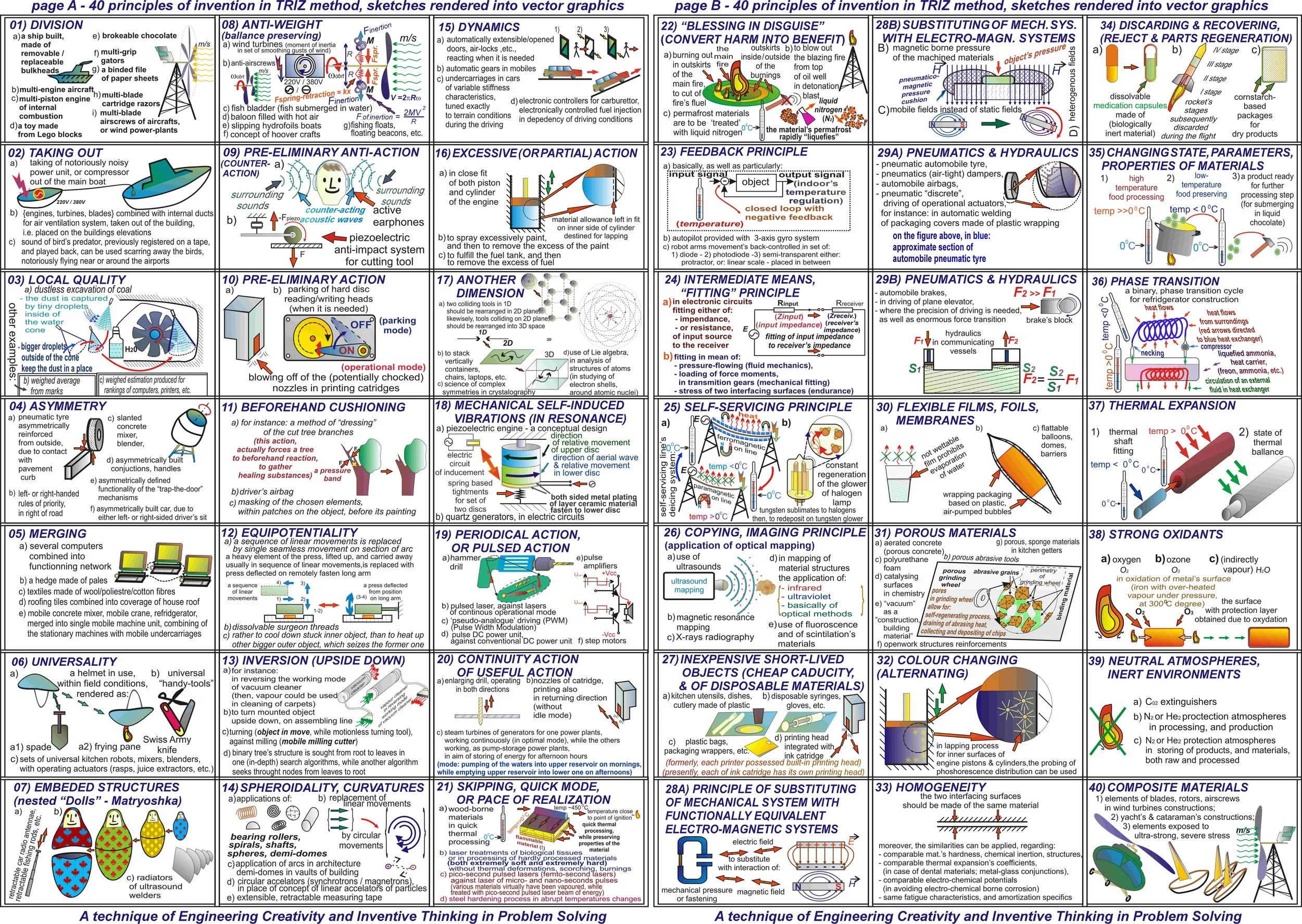Soviet Creativity: TRIZ and the Challenge of Innovation Under Oppression
The story of TRIZ, short for Teoriya Resheniya Izobretatelskikh Zadach (Theory of Inventive Problem Solving), begins in a place seemingly at odds with innovation: the brutal Soviet Gulag system under Stalin's reign of terror. This unexpected origin story is a testament to the resilience of the human spirit and the power of creative thinking, even in the face of unimaginable hardship.
Genrich Altshuller, the father of TRIZ, was a young, brilliant engineer and inventor who, like many intellectuals of his time, fell victim to Stalin's paranoia. In 1950, a letter critical of certain Soviet government decisions landed him a 25-year sentence in the infamous Vorkuta labor camp, located in the frozen wasteland above the Arctic Circle.
One might assume that such a desolate and oppressive environment would stifle any spark of creativity. However, within the confines of the Gulag, Altshuller found an unlikely source of inspiration. The camp was populated by a diverse group of intellectuals—scientists, engineers, artists, and academics—all victims of the regime's indiscriminate purges.
Deprived of their freedom, these prisoners clung to their knowledge and intellect as a beacon of hope in the darkness. They formed a clandestine intellectual community, sharing their expertise and engaging in spirited debates on various subjects. Imagine, if you will, lectures on physics whispered under the watchful eyes of guards, or mathematical equations scratched onto scraps of paper in dimly lit barracks.
This unique and challenging environment profoundly shaped Altshuller's thinking. It was here that he began to formulate the core principles of TRIZ, observing that even in the most dire circumstances, the human mind could still strive for innovation and problem-solving.
After Stalin's death in 1953 and the subsequent political thaw, Altshuller was released in 1954. Upon his return, he began working as a patent examiner, reviewing countless inventions across various fields. This experience provided the raw material for his groundbreaking insights into the nature of invention.
Altshuller's Epiphany: Patterns in Invention
While meticulously examining patents, Altshuller made a pivotal observation: problems and solutions repeat themselves across seemingly disparate industries and scientific disciplines. This realization became the cornerstone of TRIZ.
He recognized that there were underlying patterns to inventive solutions, and that these patterns could be extracted, studied, and codified. In essence, he believed that invention could be transformed from a mysterious, unpredictable process into a more systematic, repeatable, and teachable methodology.
TRIZ: Taming Contradictions to Unleash Innovation
Central to Altshuller's framework is the concept of contradictions. He identified two main types:
Technical Contradictions: These arise when improving one aspect of a system inevitably leads to a negative impact on another. For example, making a car more powerful might increase its fuel consumption, or strengthening a bridge could make it heavier and more expensive.
Physical Contradictions: These occur when a single parameter of a system needs to possess conflicting properties simultaneously. A classic example is a material that must be both strong and flexible.
Rather than settling for compromise, which often results in suboptimal solutions, TRIZ aims to eliminate the contradiction altogether. It challenges inventors to think beyond traditional trade-offs and seek solutions that achieve the desired improvement without the accompanying negative consequences.
The 40 Inventive Principles: A Toolkit for Breakthrough Thinking
To equip inventors with the tools to overcome these contradictions, Altshuller developed a set of 40 Inventive Principles, extracted from his analysis of successful patents. These principles represent recurring patterns in innovative solutions and provide a framework for thinking outside the box and approaching problems from new angles.
Some examples of these principles include:
Segmentation: Dividing a system into smaller, independent parts to improve functionality or overcome limitations. Imagine a modular furniture system that allows for various configurations or a segmented spacecraft for enhanced maneuverability.
Taking Out: Removing an unnecessary or interfering component to streamline a system or enhance its performance. Noise-canceling headphones, for example, "take out" external sounds to create a more focused listening experience.
Local Quality: Transitioning from a uniform design to one with localized variations to optimize specific functions. Think of running shoes with strategically placed cushioning for impact absorption or a variable-thickness airplane wing for improved lift distribution.
Asymmetry: Introducing asymmetry into a design to improve functionality, stability, or efficiency. Asymmetric car mirrors provide a wider field of view, while asymmetric airplane wings can enhance lift and reduce drag.
Merging: Combining similar or related elements to simplify a system, save space, or improve efficiency. All-in-one printers that integrate scanning, copying, and printing functions exemplify this principle.
The Contradiction Matrix: A Compass for Navigating Innovation
To help inventors systematically apply these principles, Altshuller created the Contradiction Matrix. This ingenious tool maps 39 common engineering parameters involved in technical contradictions, such as weight, strength, speed, reliability, and temperature.
The matrix is a 39x39 grid, where rows represent the parameter you want to improve, and columns represent the parameter that worsens as a result of that improvement. Each cell in the grid contains a list of Inventive Principles that have been historically successful in resolving that specific contradiction.
For instance, if you wanted to increase the speed of a vehicle without increasing its fuel consumption, the matrix might guide you towards principles like "Spheroidality" (using curved shapes for better aerodynamics) or "Dynamics" (making systems adjustable to optimize performance under different conditions).
From the Gulag to Global Impact
Though born in the oppressive atmosphere of the Soviet Union, TRIZ has transcended its origins to become a powerful tool for innovation worldwide. Following the Cold War, TRIZ practitioners brought the methodology to the West, where it was embraced by companies seeking to gain a competitive edge in the rapidly evolving global marketplace.
Today, TRIZ is utilized by organizations across diverse industries, from technology giants like Samsung, Intel, and LG to engineering firms like BAE Systems and Leafield Engineering, and even consumer product companies like Procter & Gamble and Mars.
The enduring legacy of TRIZ is a testament to the power of systematic problem-solving and the enduring human drive to innovate, even in the face of adversity. Altshuller's journey from the Gulag to global recognition is a powerful reminder that creativity can flourish in the most unexpected places, and that seemingly insurmountable challenges can sometimes serve as the catalyst for groundbreaking breakthroughs.
What happened to Altshuller?
By the 1970s, there was a growing TRIZ movement among Soviet engineers, and Altshuller became its intellectual leader. He lectured at conferences, published articles and books, and corresponded with other TRIZ practitioners. He founded the Azerbaijan Public Institute of Inventive Creativity in 1971, which was the first TRIZ institute in the world. He also helped to establish local TRIZ schools throughout the former USSR. He published articles with examples and exercises in the Soviet popular science magazine, Izobretatel i Ratsionalizator (Inventor and Innovator). In 1989, he became the President of the International TRIZ Association. He also supported himself and his family by writing science fictions stories under the pen name Genrikh Altov
Altshuller left Baku in the early 1990s and settled in Petrozavodsk, Russia with his wife and granddaughter. This made Petrozavodsk a center for TRIZ research and association. Altshuller died in 1998 from complications from Parkinson’s disease. He wrote about 20 books and 400 articles on TRIZ, led 65 seminars, and taught thousands of students. He was also the author of several patents.
Altshuller’s wife, Valentina Zhuravleva, lived until 2004. She co-authored many science and fiction books with Altshuller.
Sources:
https://shorturl.at/i32mP
https://shorturl.at/K3Rsh
https://shorturl.at/LU2V0
https://shorturl.at/x2oQ7
https://shorturl.at/pdDen
https://www.triz40.com/aff_Principles_TRIZ.php



